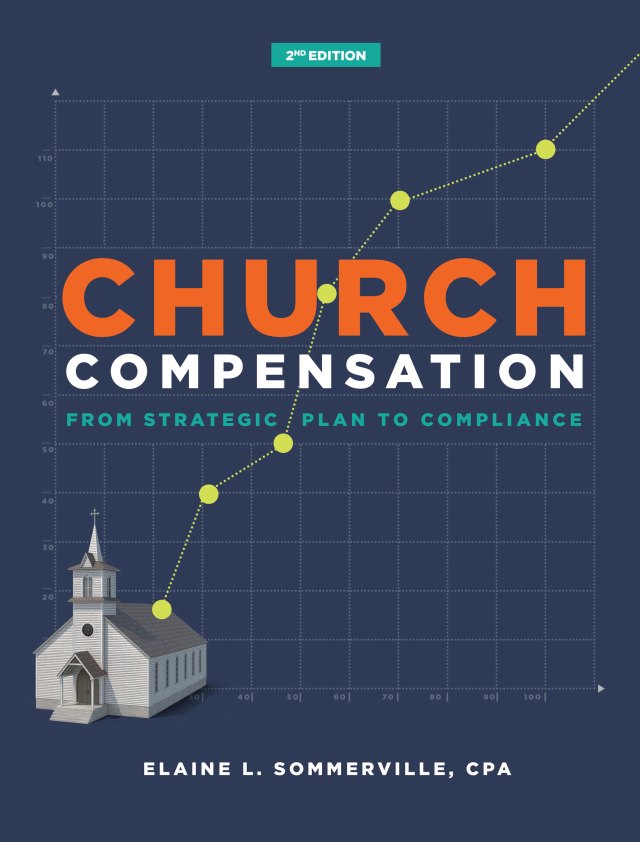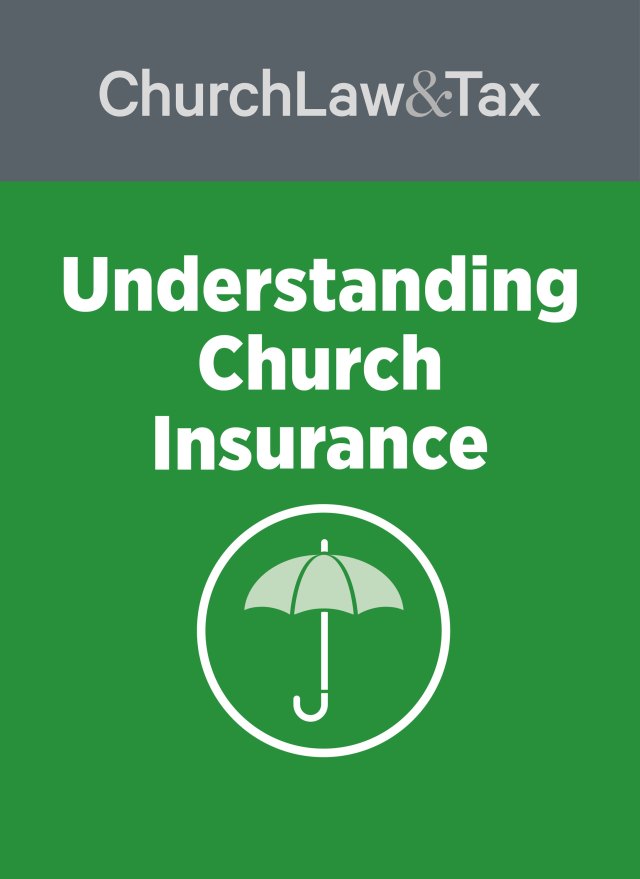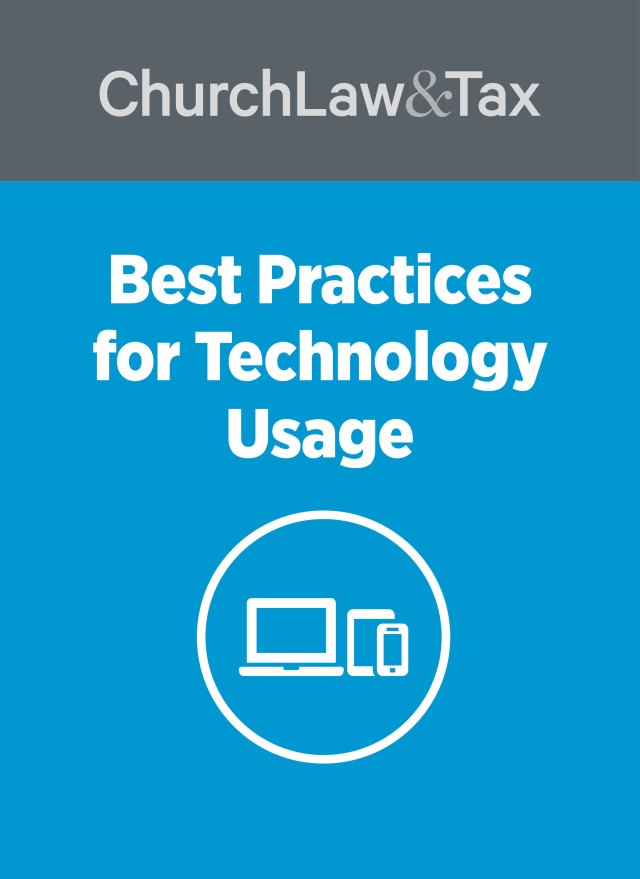In the final days of 2016, Congress enacted the 400-page 21st Century Cures Act, with massive bipartisan support. While the Act addresses several health-related issues, perhaps of most interest to church leaders is a provision relieving many small employers of one of the most feared provisions in the Affordable Care Act: the infamous $100 per day per employee penalty. Prior to the passage of the Act, the Internal Revenue Service could impose this penalty on any employer that continued to pay or reimburse employees’ medical insurance under a private plan.
This article will review the background of the penalty, and explain who benefits from the new law.
Prior law
The tax status of employer payments or reimbursements of employee medical insurance under private plans before the enactment of the 21st Century Cures Act is summarized below.
(1) Exclusion for employer-provided health benefits
Sections 105(h) and 106 of the tax code specify that an employee may exclude from taxable income amounts provided through an arrangement under which (1) an employer pays or reimburses premiums for health insurance for the employee and family members purchased in the individual insurance market (referred to as an employer payment plan or EPP) or (2) an employer reimburses the employee for medical expenses generally of the employee and family members (referred to as a health reimbursement arrangement or HRA).
Key point. The exclusions from taxable income of EPPs and HRAs have never been repealed by Congress. However, they are rarely used because of their treatment as group health plans under the ACA. And, since most fail to implement some of the mandatory market reforms that apply to group plans, they are subject to the $100 per day per employee excise tax penalty.
In order for employer payments or reimbursements under these arrangements to be excluded from gross income, premiums and other expenses must be substantiated and an employee must be entitled to receive payments from the employer only if he or she incurs qualifying expenses. Treas. Reg. sec. 1.105-2.
A self-insured medical reimbursement plan must meet certain nondiscrimination requirements in order for the benefits provided to a highly compensated individual to be excluded from income. For this purpose, the following groups of employees may be excluded: employees who have not completed three years of service with the employer, employees under age 25, part-time or seasonal employees, employees covered by a collective bargaining agreement if health benefits was the subject of good faith bargaining, and nonresident aliens with no earned income from sources within the United States.
The IRS affirmed the tax-free status of these arrangements in a 1961 ruling in which it concluded that if an employer reimburses an employee’s substantiated premiums for nonemployer sponsored medical insurance, the payments are excluded from the employee’s taxable income under section 106. IRS Revenue Ruling 61-146. The IRS added that this exclusion also applies if the employer pays the premiums directly to the insurance company.
(2) Group health plan requirements
The ACA contains several reforms of the insurance market (the “market reforms”) that apply to group health plans effective January 1, 2014. These reforms include:
The “annual dollar limit prohibition.” A group health plan may not establish any annual limit on the dollar amount of benefits for any individual.
The “preventive services requirement.” Employer-sponsored group health plans must provide certain preventive services without imposing any cost-sharing requirements for these services on employees.
In late 2013, the IRS and Departments of Labor and Health and Human Services issued IRS Notice 2013-54. The notice concludes that these two market reforms apply to group health plans, with a few exceptions, and it defined group health plans to include plans under which “an employer reimburses an employee for some or all of the premium expenses incurred for an individual health insurance policy … or arrangements under which the employer uses its funds to directly pay the premium for an individual health insurance policy covering the employee.”
The notice concludes that in most cases, employer payment plans will fail to meet these market reforms and therefore will be unlawful under the ACA because they typically impose limits on benefits in violation of the annual dollar limit prohibition. And the same is true for an HRA that fails to meet those requirements unless the HRA is provided in conjunction with (or “integrated” with) employer-sponsored coverage that meets the requirements. An HRA that is integrated with such employer-sponsored coverage is often referred to as an “integrated” HRA, and an HRA that is not integrated with such employer-sponsored coverage is often referred to as a “stand-alone” HRA. Thus, an employer may be subject to an excise tax if it provides an employer payment plan or a stand-alone HRA.
The notice further explains:
A group health plan, such as an employer payment plan, that reimburses employees for an employee’s substantiated individual insurance policy premiums must satisfy the market reforms for group health plans. However the employer payment plan will fail to comply with the annual dollar limit prohibition because (1) an employer payment plan is considered to impose an annual limit up to the cost of the individual market coverage purchased through the arrangement, and (2) an employer payment plan cannot be integrated with any individual health insurance policy purchased under the arrangement.
In 2013, the IRS reaffirmed the unlawful status of most employer payment plans in a notice containing the following question and answer:
Q1. What are the consequences to the employer if the employer does not establish a health insurance plan for its own employees, but reimburses those employees for premiums they pay for health insurance (either through a qualified health plan in the Marketplace or outside the Marketplace)?
Under IRS Notice 2013-54, such arrangements are described as employer payment plans. An employer payment plan, as the term is used in this notice, generally does not include an arrangement under which an employee may have an after-tax amount applied toward health coverage or take that amount in cash compensation. As explained in Notice 2013-54, these employer payment plans are considered to be group health plans subject to the market reforms, including the prohibition on annual limits for essential health benefits and the requirement to provide certain preventive care without cost sharing. Notice 2013-54 clarifies that such arrangements cannot be integrated with individual policies to satisfy the market reforms. Consequently, such an arrangement fails to satisfy the market reforms and may be subject to a $100/day excise tax per applicable employee (which is $36,500 per year, per employee) under section 4980D of the Internal Revenue Code.
Key point. The IRS provided temporary relief from the $100 per day penalty for small employers, but the latest relief expired on June 30, 2015, exposing countless small employers, including churches, to this onerous penalty.
Other health rules under the Code
Individuals are generally required to have health coverage, referred to as minimum essential coverage. Unless an exception applies, an individual who fails to have minimum essential coverage may be subject to a tax penalty. Minimum essential coverage includes employer-sponsored coverage under a group health plan, other than certain types of limited coverage, such as coverage only for vision or dental medical services. Minimum essential coverage also includes coverage purchased in the individual insurance market, other than certain types of limited coverage, such as coverage only for vision or dental medical services.
If an applicable large employer fails to offer employees minimum essential coverage, or offers minimum essential coverage that is not affordable (under the standard described above), and any employee receives a premium assistance credit, the employer may be subject to a tax penalty. IRC4980H. For this purpose, an applicable large employer generally means, with respect to a calendar year, an employer who employed an average of at least 50 full-time employees on business days during the preceding calendar year. In determining whether an employer is an applicable large employer (that is, whether the employer has at least 50 full-time employees), besides the number of full-time employees, the employer must include the number of its full-time equivalent employees for a month, determined by dividing the aggregate number of hours of service of employees who are not full-time employees for the month by 120. In addition, in determining applicable large employer status, members of the same controlled group, or group under common control, are treated as a single employer.
Effective 2020, an excise tax (the high-cost coverage excise tax, commonly also referred to as the “Cadillac” tax) applies if the aggregate cost of employer-provided coverage provided to an employee under an employer’s group health plans exceeds a specified amount.
Reasons for the change
Small employers are not required to provide health insurance coverage to their employees and, for some small employers, doing so may not be feasible. Nonetheless, many small employers wish to provide pretax funds that employees may use to purchase their own health insurance or pay for expenses not covered by their insurance. However, prior to the 21st Century Cures Act, providing such funds may expose a small employer to a substantial excise tax. Congress wanted to enable small employers to provide such funds without incurring the $100 per employee per day excise tax.
QSEHRA Explained
Under the 21st Century Cures Act, a “qualified small employer health reimbursement arrangement” (QSEHRA) is generally not a group health plan under the tax code, ERISA or PHSA and thus is not subject to the group health plan requirements. And, most importantly, this means that a QSEHRA will not be assessed the $100 per day per employee penalty for failure to comply with the market reforms that apply to group health plans.
A QSEHRA is defined as an arrangement that:
- is provided on the same terms to all eligible employees (defined below) of an eligible employer (defined below);
- is funded solely by the eligible employer and no salary reduction contributions may be made under the arrangement;
- provides, after an employee provides proof of minimum essential coverage, for the payment or reimbursement of medical expenses of the employee and family members; and
- the amount of payments and reimbursements under the arrangement for a year cannot exceed specified dollar limits (for 2016, the dollar limits are $5,130 ($10,260 in the case of expenses of an employee and family members).
The maximum dollar amount of payments or reimbursements that may be made under a QSEHRA with respect to an eligible employee for a year is the employee’s “permitted benefit.” An arrangement does not fail to be provided on the same terms to all eligible employees merely because employees’ permitted benefits vary with the price of a health insurance policy in the individual insurance market based on the ages of the employee and family members or the number of family members covered by the arrangement, provided that the variation is determined by reference to the same insurance policy for all eligible employees.
Eligible employee
An “eligible employee” means any employee of an eligible employer, except that the terms of the QSEHRA may exclude:
- employees who have not completed 90 days of service with the employer;
- employees under age 25;
- part-time or seasonal employees; or
- nonresident aliens with no earned income from sources within the United States.
Eligible employer
“Eligible employer” means an employer that
- is not an applicable large employer as defined for purposes of the requirement that an applicable large employer offer its employees minimum essential coverage (that is, generally, an employer with fewer than 50 full-time equivalent employees during the preceding year), and
- does not offer a group health plan to any of its employees.
Key point. The relief from the $100 per day per employee excise tax will not benefit all churches. A church may be subject to the penalty if, for example, it offers an employer payment plan or health reimbursement arrangement (defined above) and: (1) it is an applicable large employer with an average of 50 full-time employees and “full-time equivalents” (FTEs) during the previous calendar year; (2) it offers a group health plan to any of its employees; (3) it contributes more than $5,130 ($10,260 for a family) to an employer payment plan or health reimbursement arrangement (defined above); or, (4) the arrangement fails to satisfy one or more of the other requirements for a QSEHRA summarized above.
Notice and reporting requirements
The new law includes several requirements relating to notices and reporting.
Not later than 90 days before the beginning of a year in which an employer will fund a QSEHRA (or, if later, the date on which an employee becomes eligible for the QSEHRA), the employer must provide eligible employees with a written notice containing the amount of the employee’s permitted benefit and certain other information. An employer that fails to provide the notice may be subject to a tax penalty of $50 per employee, subject to a maximum of $2,500 for the year.
In addition, the employer must report an employee’s permitted benefit for a year on the employee’s Form W-2 for the year. An eligible employee who applies for advance premium assistance with respect to Exchange coverage for a year must provide the Exchange with the amount of his or her permitted benefit for the year.
Effective date
The new law’s provision of relief from the $100 per employee per day penalty for noncompliant group plans is effective retroactively.



